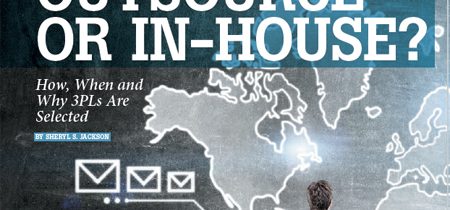Outsource or In-House? How, When and Why 3PLs Are Selected
Content was pulled from MHI Solutions Magazine Q4.2018
As retailers and manufacturers strive to meet fulfillment and distribution challenges in today’s Amazon-led competitive e-commerce market, companies must evaluate the pros and cons of handling these tasks in-house versus outsourcing to a third-party logistics (3PL) partner.
Cost savings, quality control, transparency and safety are key reasons to handle e-fulfillment in-house, while access to expertise, faster-to-market, new product testing, small volume and investment in up-to-date technology are reasons to outsource.1
The decision to outsource or not differs on the perspective of the company, pointed out Christian Dow, president of MHI member Panther Industries. “A small retail or manufacturing organization may try to handle fulfillment and distribution on its own until the business grows to a point that volume of orders and space required for fulfillment makes the use of a 3PL a good business decision,” he explained. “I’ve also seen companies that continue to grow reach a size that justifies bringing those activities back in-house when resources are available.”
E-commerce activity is a driver for the need to outsource fulfillment and distribution, said Patrick Sedlak, principal at MHI member Sedlak Management Consultants. “We see start-up e-commerce retailers outsource in the beginning and through their initial growth, and we are seeing legacy brick-and-mortar retailers outsource fulfillment as they begin to extend their e-commerce businesses.”
The global nature of e-commerce also affects decisions regarding the use of 3PLs. “Many companies use a combination of outsourcing and in-house operations—fulfilling orders to brick-and-mortar stores through their own distribution centers in their region and relying on 3PLs to handle high volume, small order e-commerce activity across a wider area,” said Dow.
Outsourcing makes sense for many retailers for a variety of reasons beyond handling complex fulfillment and distribution, said Jeff Mueller, vice president at Sedlak. Partnership with a 3PL requires operational funds rather than capital investment to build and equip a fulfillment center, which frees capital dollars to pursue acquisitions, new builds or major store improvements. “The choice of outsourcing versus in-house operations really depends on the company culture and philosophy of company leaders,” he said. “Some leaders are excited about distribution and see it as a way to ensure a high level of customer service and increased sales while others view a distribution and fulfillment center as a black hole.”
Read full article in MHI Solutions Magazine





